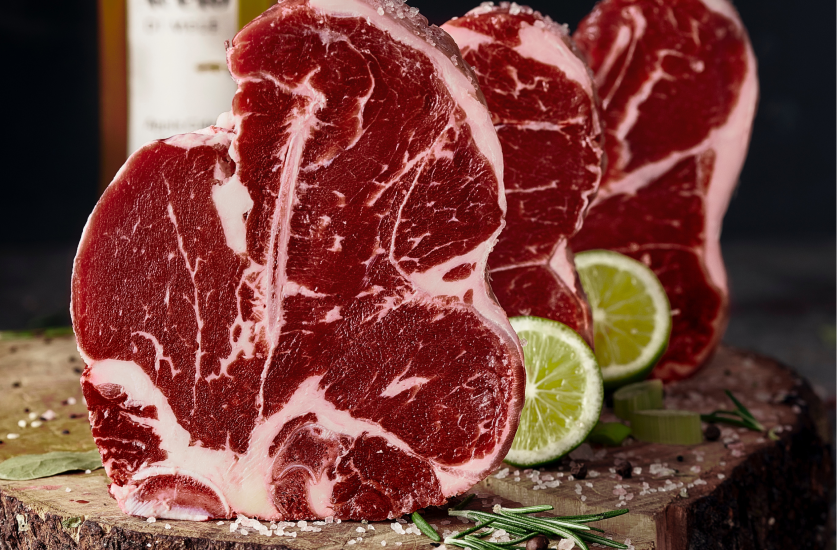Beef
-
Beef
Beef
-
Chicken
Chicken
-
Pork
Pork
-
Eggs
Eggs
-
Fish
Fish
-
Lamb
Lamb
-
Goat meat
Goat meat
-
Honey
Honey
-
Sea Food
Sea Food
-
Milk
Milk
-
Cheese
Cheese
-
Yogurt
Yogurt
Our Brochures
Contact Us
Social Media


Beef is the culinary name for meat from cattle (Bos taurus). Today, beef is the third most widely consumed meat in the world, after pork and poultry. As of 2018, the United States, Brazil, and China were the largest producers of beef.Beef contains protein, iron, and vitamin B12. Beef can be prepared in various ways; cuts are often used for steak, which can be cooked to varying degrees of doneness, while trimmings are often ground or minced, as found in most hamburgers.
Beefs Production
Beef cattle are raised and fed using a variety of methods, including feedlots, free range, ranching, backgrounding and intensive animal farming. Concentrated Animal Feeding Operations (CAFOs), commonly referred to as factory farms, are commonly used to meet the demand of beef production.
CAFOs supply 70.4% of cows in the US market and 99% of all meat in the United States supply. In 2018, the United States, Brazil, and China produced the most beef with 12.22 million tons, 9.9 million tons, and 6.46 million tons respectively.
The top 3 beef exporting countries
- Australia (14.8% of total exports)
- United States (13.4% of total exports)
- Brazil (12.6% of total exports)
Beef production is also important to the economies of Japan, Argentina, Uruguay, Canada, Paraguay, Mexico, Belarus and Nicaragua.
Beefs Production
Most beef can be used as is by merely cutting into certain parts, such as roasts, short ribs or steak, while other cuts are processed.Trimmings, on the other hand, which are usually mixed with meat from older, leaner, cattle, are ground, minced or used in sausages. The blood is used in some varieties called blood sausage. These are basic sections from which steaks and other subdivisions are cut.
The term “primal cut” is quite different from “prime cut”, used to characterize cuts considered to be of higher quality.
Since the animal’s legs and neck muscles do the most work, they are the toughest; the meat becomes more tender as distance from hoof and horn increases.
Different countries and cuisines have different cuts and names, and sometimes use the same name for a different cut; for example, the cut described as “brisket” in the United States is from a significantly different part of the carcass than British brisket.
